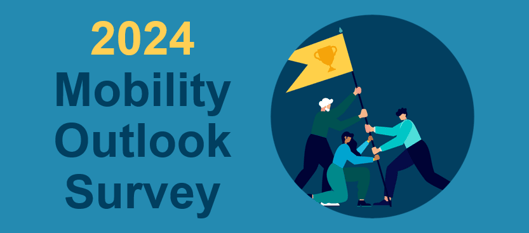I’m frequently asked what makes a great Global Mobility Program. Having had the opportunity of working with many global organisations, there are some clear best practices that differentiate the high performing mobility programs. In our last post I shared the first four personal top practices that can transform your mobility function into to a world-class program. Let's see the full list.
-
Strategic Alignment: Begin with a compass, not a map. Before diving into the logistics, ensure your global mobility program aligns with your organization's overarching strategy. Build relationships with important stakeholders, identify key business objectives, and understand how international assignments fit into the grand scheme of things. A well-aligned program is a strategic asset.
- Leadership Buy-In: Secure commitment from the ‘top brass’. Leadership buy-in is like wind in your sails; it propels your program forward. Ensure executives understand the value of global mobility, not just as an HR initiative but as a driver of organizational growth and talent development.
- Policies with a Global Perspective: Craft mobility policies with a global perspective. Consider the range of mobility needs in your organisation and tailor a suite of policies to meet those demands. Make sure the program is coherent, fair and can be applied consistently. Consider decision guides to help the business, HRBPs, TA and other stakeholders navigate the policy suite and make informed mobility choices. A standardized approach does not mean a one-size-fits-all; offer flexibility within a fair and adaptive framework
- Technology: In the age of digital enlightenment, you need to leverage technology and build an integrated network of suppliers. Implement tools for streamlined communication, compensation management, cost projections and budgeting, expense management, and tracking. Technology is not just a convenience; it is a necessity for managing a program that spans across continents.
- Pre-Assignment Support: We often focus so much on the strategic role of Global Mobility that we can sometime overlook the individual who is moving. Preparing employees for an international assignment is more than just packing bags. Provide comprehensive pre-assignment support, including cultural training, language assistance, and a clear outline of expectations. A well-prepared employee is an empowered and successful assignee.
- Ongoing Communication: Maintain an open channel of communication throughout the assignment. Regular check-ins, virtual town halls, and an accessible HR team can bridge the geographical gap. Communication is not just about updates; it's about fostering a sense of connection and support. As such, it is vital to have mentors in the business who ‘own’ the relationship with the assignee and sponsor their career progression.
- Feedback Loops: Do not view the end of an assignment as the finish line. Establish feedback mechanisms to gather insights from assignees, home and host teams. Learn from successes and challenges, adapting your program for continuous improvement. A dynamic program will grow with the organisation as its’ need
Subscribe to the blog for more posts like this!
Photo by AIRINC Researcher: CANADA, Edmonton Ice Castle
2024 Mobility Outlook Survey is open! Why not participate here!





%20(47).png)
%20(26).png)
%20(9)-1.png)

